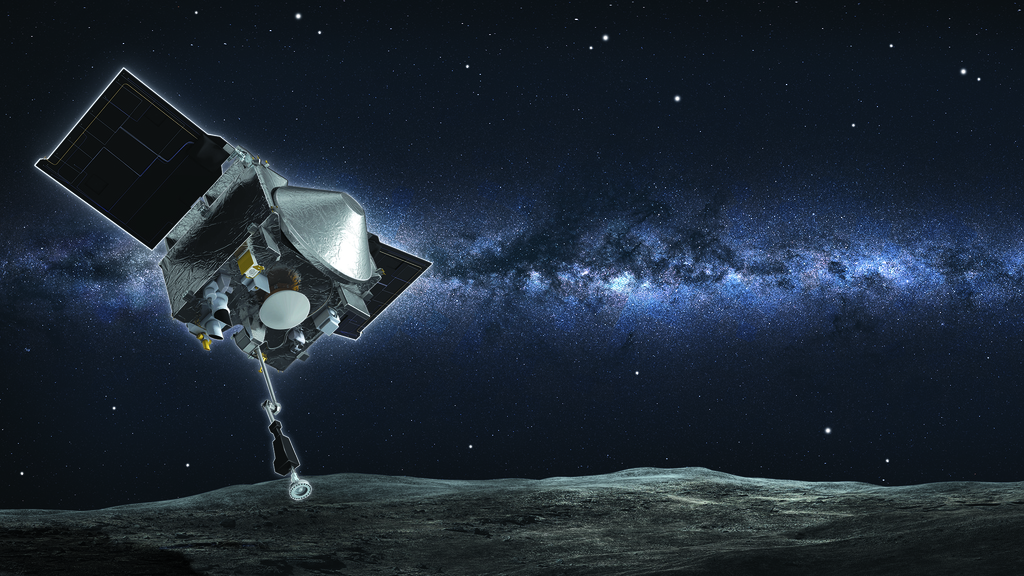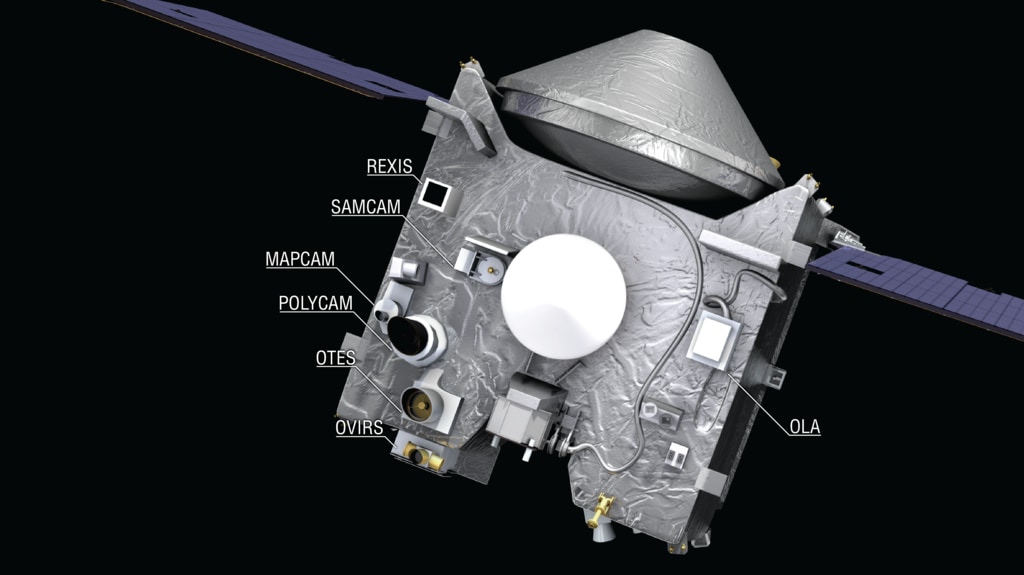OSIRIS-REx LPSC Media Telecon
NASA hosted a media teleconference at 1:30 p.m. EDT Tuesday, March 19, to announce new science from the agency’s first mission to return to Earth an asteroid sample that may contain unaltered material from the very beginning of our solar system.
The Origins, Spectral Interpretation, Resource Identification, Security-Regolith Explorer (OSIRIS-REx) spacecraft launched Sept. 8, 2016, and began orbiting the asteroid Bennu on Dec. 31, 2018. Since its arrival at Bennu, the probe has been investigating the asteroid and searching for an ideal site for sample collection.
Bennu is only slightly wider than the height of the Empire State Building and is the smallest body ever orbited by spacecraft. Studying Bennu with OSIRIS-REx will allow researchers to learn more about the origins of our solar system, the sources of water and organic molecules on Earth, and the hazards and resources in near-Earth space.
The teleconference participants are:
Lori Glaze, acting director, NASA’s Planetary Science Division, Washington
Dante Lauretta, OSIRIS-REx principal investigator, University of Arizona, Tucson
Coralie Adam, OSIRIS-REx flight navigator, KinetX, Inc. Space Navigation and Flight Dynamics, Simi Valley, Calif.
Rich Burns, OSIRIS-REx project manager, NASA’s Goddard Space Flight Center, Greenbelt, Md.
For more information about the mission, go to nasa.gov/osirisrex or asteroidmission.org.
Learn more about the big surprises at Bennu that were announced during this teleconference, and see images of the asteroid's particle plumes and its unexpectedly rugged surface.
Recorded audio from the OSIRIS-REx science results teleconference on March 19, 2019, with accompanying presenter graphics. Individual graphics are available below.
Watch this video on the NASA.gov Video YouTube channel.

Media teleconference promotional image
Credit: NASA/Goddard/University of Arizona

1. Glaze - NASA's Small Bodies Fleet
Credit: NASA
1. Lauretta - Asteroid 101955 Bennu rotating
This rotating mosaic of asteroid Bennu is composed of 40 images captured by the PolyCam imager onboard NASA’s OSIRIS-REx spacecraft over a four-hour period on December 2, 2018. During the observation period, the spacecraft’s range to the center of the asteroid decreased from about 15.3 to 14.6 miles (24.6 to 23.5 km).
Credit: NASA/Goddard/University of Arizona

2. Lauretta - Bennu images and spectra
Credit: NASA/Goddard/University of Arizona/Arizona State University

3. Lauretta - Bennu particle plumes
This view of asteroid Bennu ejecting particles from its surface on January 19 was created by combining two images taken by the NavCam 1 imager onboard NASA’s OSIRIS-REx spacecraft: a short exposure images (1.4 ms), which shows the asteroid clearly, and a long exposure image (5 sec), which shows the particles clearly. Other image processing techniques were also applied, such as cropping and adjusting the brightness and contrast of each layer.
Credit: NASA/Goddard/University of Arizona/Lockheed Martin

4. Lauretta - OSIRIS-REx candidate sample site on asteroid Bennu
As OSIRIS-REx surveys asteroid Bennu in detail, the mission team is beginning to identify potential locations for the spacecraft to collect a sample. The spacecraft’s PolyCam camera imaged this candidate sample site in the asteroid’s northern hemisphere (roughly 55 N latitude and 50 E longitude) on March 7 from a distance of about 3.1 miles (5 km).
Credit: NASA/Goddard/University of Arizona
1. Adam - OSIRIS-REx Orbit insertion and Orbital A as flown
Credit: NASA/Goddard

2. Adam - Stellar navigation vs. landmark-based navigation
During Orbital A, OSIRIS-REx transitioned from using the center of Bennu (relative to background stars) to using landmarks on the asteroid’s surface for navigation.
Credit: NASA/Goddard/University of Arizona/Lockheed Martin/KinetX, Inc.

3. Adam - Bennu particle velocities
Yellow arrows overlaid on two long-exposure images of asteroid Bennu show the trajectories of particles that were ejected from Bennu’s surface on January 19. The underlying image is a composite of two images captured by the NavCam 1 imager onboard OSIRIS-REx.
Credit: NASA/Goddard/University of Arizona/Lockheed Martin/KinetX, Inc.

1. Burns - OSIRIS-REx candidate sample site and target area on asteroid Bennu
The original OSIRIS-REx mission design called for the spacecraft to target a hazard-free area with an 82-foot (25-meter) radius during sample collection. Bennu’s high density of boulders means the team must prepare to sample a markedly smaller area, such as the loose regolith in the upper left portion of this PolyCam image taken on March 7. This candidate sample site is located at roughly 10 N latitude and 95 E longitude.
Credit: NASA/Goddard/University of Arizona
2. Burns - OSIRIS-REx sample collection animation
Credit: NASA/Goddard

5. Lauretta – Bennu Revealed Graphic
Credit: NASA/Goddard/University of Arizona
For More Information
See NASA.gov
Credits
Please give credit for this item to:
NASA's Goddard Space Flight Center
-
Public affairs officers
- Nancy Neal-Jones (NASA/GSFC)
- Erin Morton (The University of Arizona)
-
Presenters
- Nancy Neal-Jones (NASA/GSFC)
- Lori S. Glaze (NASA/HQ Planetary Science)
- Dante Lauretta (The University of Arizona)
- Coralie Adam (KinetX)
- Rich Burns (NASA/GSFC)
-
Producers
- Dan Gallagher (USRA)
- James Tralie (ADNET Systems, Inc.)
-
Graphic designer
- Heather Roper (The University of Arizona)
-
Animators
- Walt Feimer (KBR Wyle Services, LLC)
- Michael Lentz (USRA)
- Lisa Poje (Freelance)
-
Data visualizer
- Kel Elkins (USRA)
-
Technical support
- Aaron E. Lepsch (ADNET Systems, Inc.)
Release date
This page was originally published on Tuesday, March 19, 2019.
This page was last updated on Wednesday, May 3, 2023 at 1:46 PM EDT.


